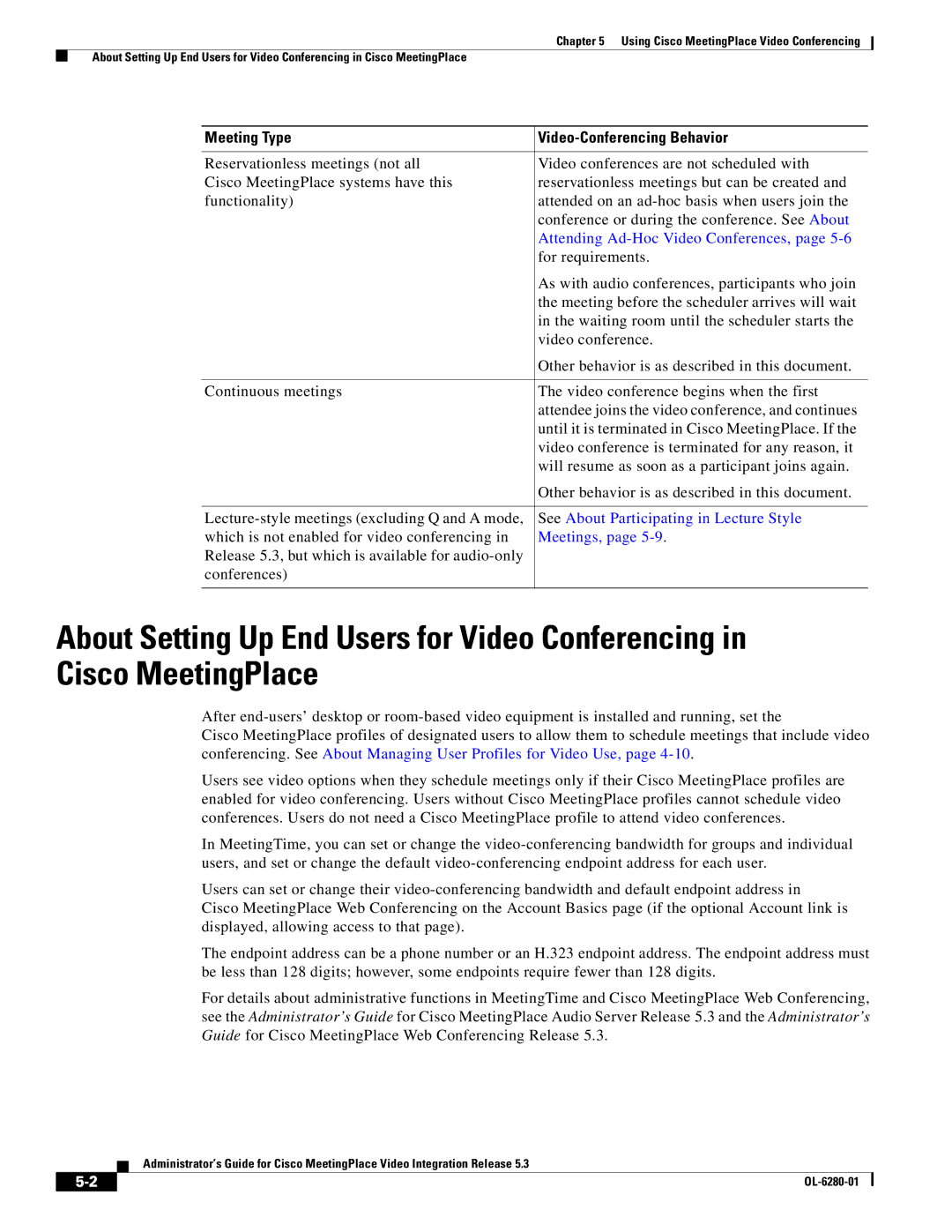
Chapter 5 Using Cisco MeetingPlace Video Conferencing
About Setting Up End Users for Video Conferencing in Cisco MeetingPlace
Meeting Type | |
|
|
Reservationless meetings (not all | Video conferences are not scheduled with |
Cisco MeetingPlace systems have this | reservationless meetings but can be created and |
functionality) | attended on an |
| conference or during the conference. See About |
| Attending |
| for requirements. |
| As with audio conferences, participants who join |
| the meeting before the scheduler arrives will wait |
| in the waiting room until the scheduler starts the |
| video conference. |
| Other behavior is as described in this document. |
|
|
Continuous meetings | The video conference begins when the first |
| attendee joins the video conference, and continues |
| until it is terminated in Cisco MeetingPlace. If the |
| video conference is terminated for any reason, it |
| will resume as soon as a participant joins again. |
| Other behavior is as described in this document. |
|
|
See About Participating in Lecture Style | |
which is not enabled for video conferencing in | Meetings, page |
Release 5.3, but which is available for |
|
conferences) |
|
|
|
About Setting Up End Users for Video Conferencing in Cisco MeetingPlace
After
Cisco MeetingPlace profiles of designated users to allow them to schedule meetings that include video conferencing. See About Managing User Profiles for Video Use, page
Users see video options when they schedule meetings only if their Cisco MeetingPlace profiles are enabled for video conferencing. Users without Cisco MeetingPlace profiles cannot schedule video conferences. Users do not need a Cisco MeetingPlace profile to attend video conferences.
In MeetingTime, you can set or change the
Users can set or change their
Cisco MeetingPlace Web Conferencing on the Account Basics page (if the optional Account link is displayed, allowing access to that page).
The endpoint address can be a phone number or an H.323 endpoint address. The endpoint address must be less than 128 digits; however, some endpoints require fewer than 128 digits.
For details about administrative functions in MeetingTime and Cisco MeetingPlace Web Conferencing, see the Administrator’s Guide for Cisco MeetingPlace Audio Server Release 5.3 and the Administrator’s Guide for Cisco MeetingPlace Web Conferencing Release 5.3.
Administrator’s Guide for Cisco MeetingPlace Video Integration Release 5.3
|
| |
|
